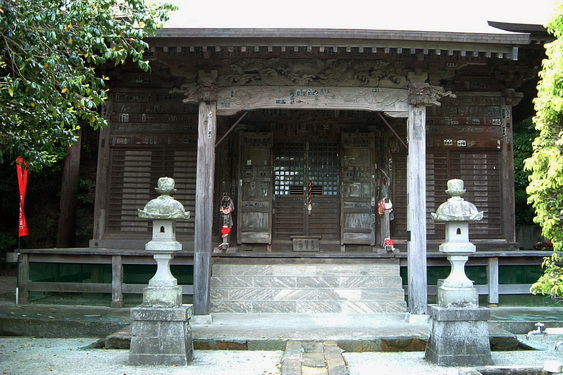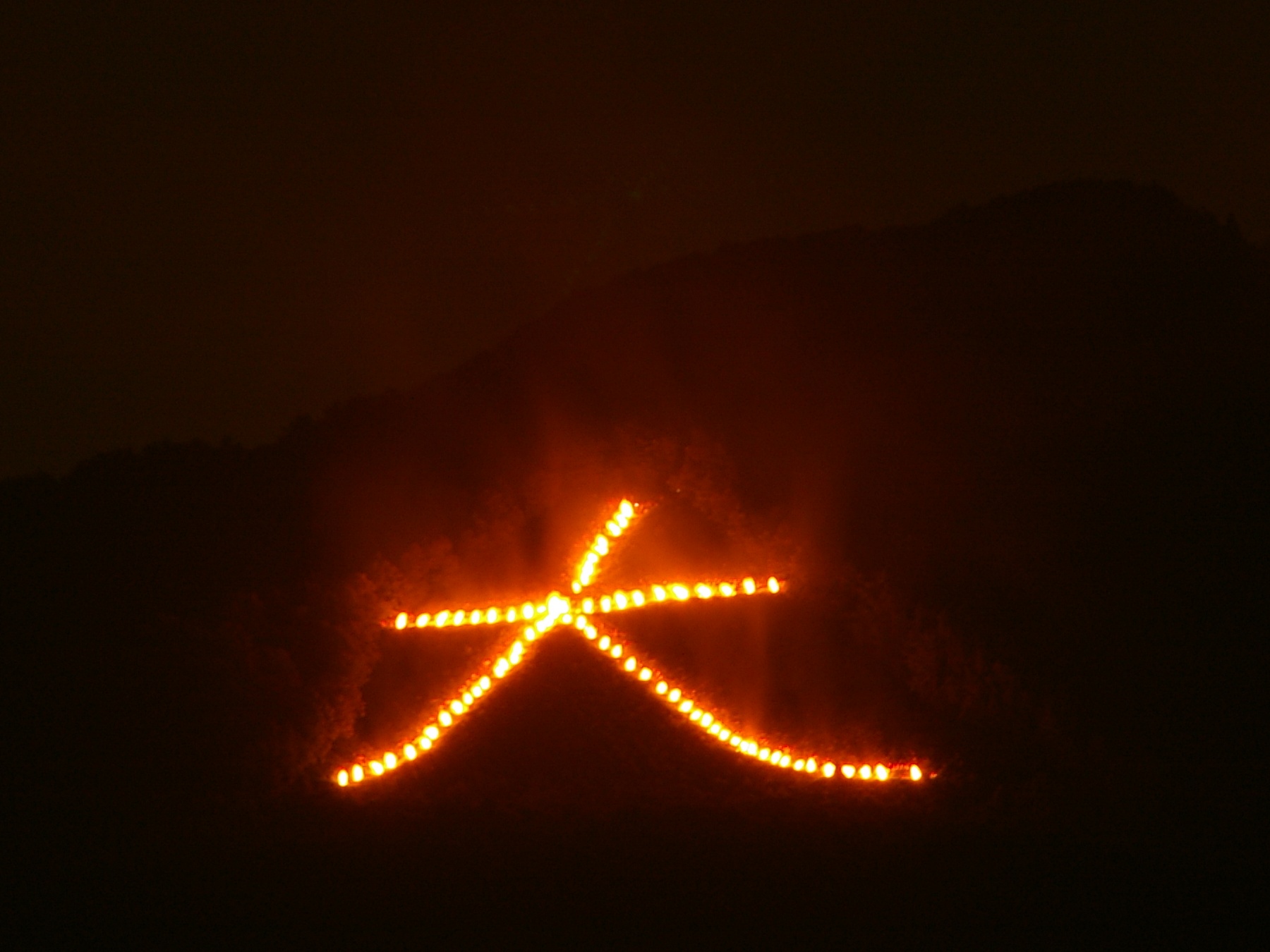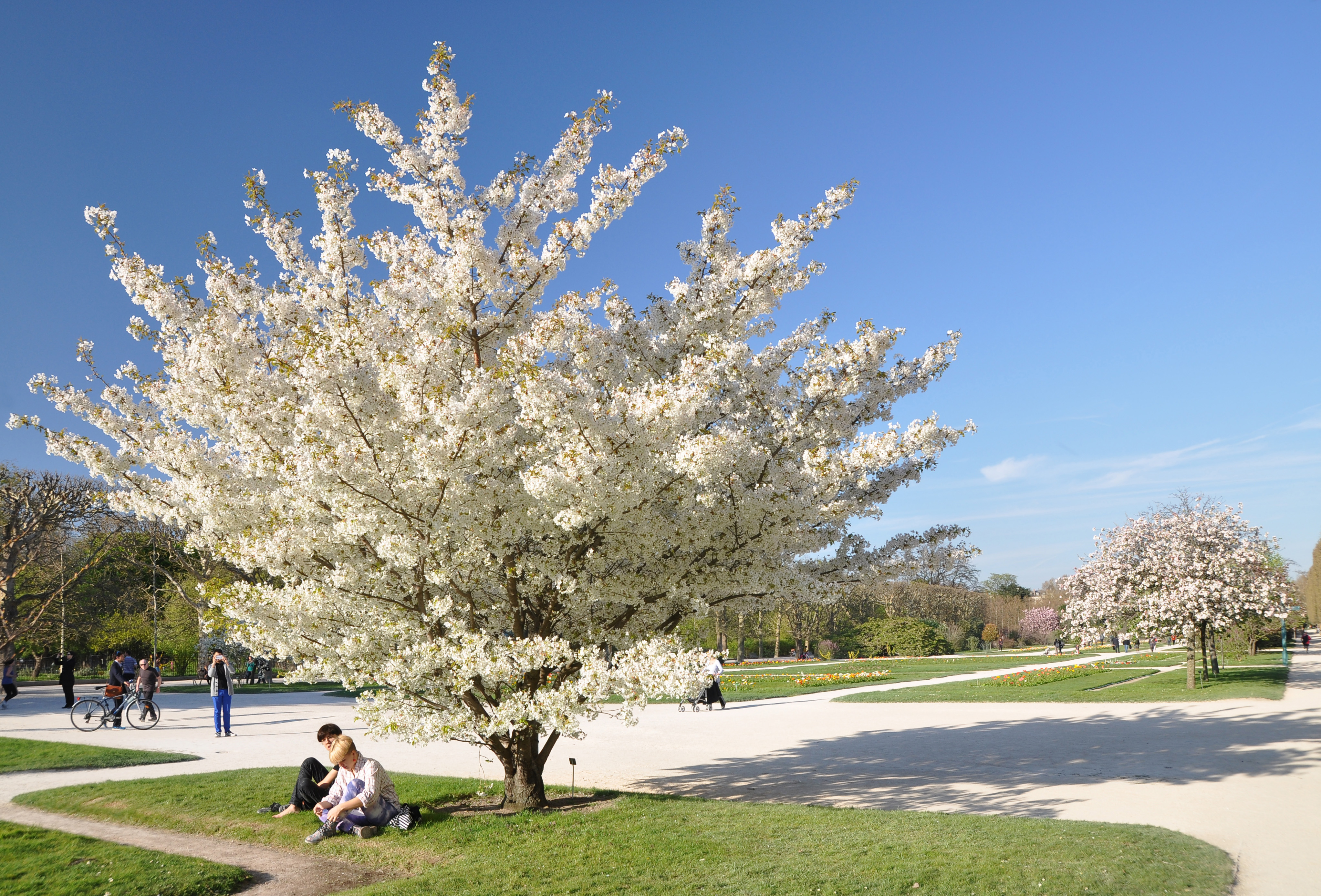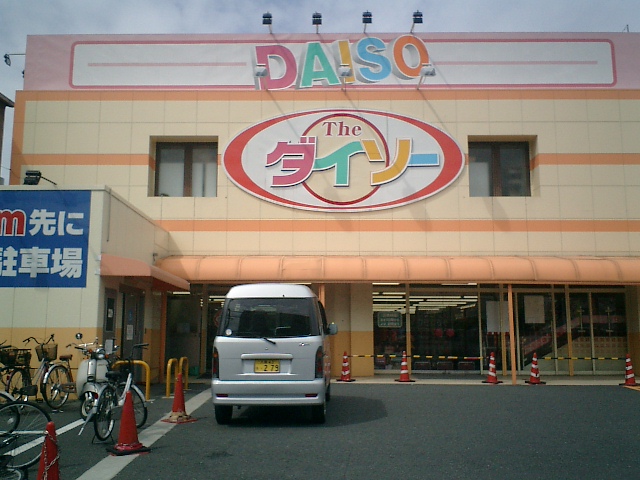|
Gumyōji
is a neighborhood located in Minami-ku, Yokohama, Minami-ku in the city of Yokohama in Kanagawa Prefecture, Japan. In reference to the Keikyū Main Line, Keikyu Line, it is between Kami-Ōoka Station, Kami-Ōoka and Idogaya Stations. Within Gumyōji is the temple, Gumyō-ji, from which it gets its name. Also located within Gumyōji are the Ōoka Harappa park, Minami Library, Miurayu Onsen, the Kannon Dōri Shopping Street, Minami Police Station, the Open University of Japan, and the Uny store. Gumyō-ji Gumyō-ji is a Kōyasan Shingon-shū temple. According to temple legend, it was founded by Gyōki in 737, making it the oldest temple in Yokohama, but it is believed to have actually been founded in 1044. The temple was originally named during the Kamakura period but was renamed . The mountain behind the temple, once part of the temple grounds, is now Gumyō-ji Park. Its temple grounds are depicted in the 1834 ''Edo meisho zue''. In 1901, the Gumyō-ji Preservation Society was ... [...More Info...] [...Related Items...] OR: [Wikipedia] [Google] [Baidu] |
Minami-ku, Yokohama
is one of the 18 Wards of Japan, wards of the city of Yokohama in Kanagawa Prefecture, Japan. As of 2010, the ward had an estimated population of 197,019 and a population density, density of 15,550 persons per km². The total area was 12.67 km². It is located in the southeastern part of the city and has a mix of busy areas near train stations and quiet residential neighborhoods. The ward is crossed by the Ōoka River, and its riverside is popular among tourists and locals for cherry blossoms in the spring. Minami Ward is home to Gumyō-ji, the oldest Buddhist temple in Yokohama. Geography Minami Ward is located in eastern Kanagawa Prefecture, and south of the geographic center of the city of Yokohama. Large buildings and apartment complexes are built up along the area surrounding the highways and railways in the Ward; and all other parts of the Ward are residential areas. The Ōoka River is the major river in the Ward, and in spring many sakura, cherry blossoms come i ... [...More Info...] [...Related Items...] OR: [Wikipedia] [Google] [Baidu] |
Keikyū Main Line
The is a railway line in Japan, operated by the private railway operator Keikyu. The line connects the Tokyo wards of Minato, Tokyo, Minato, Shinagawa, Tokyo, Shinagawa, Ōta, Tokyo, Ōta, and the Kanagawa Prefecture, Kanagawa municipalities of Kawasaki, Kanagawa, Kawasaki, Yokohama and Yokosuka. The Keikyu Main Line began as a short line in 1895. By 1905 it was extended from Shinagawa Station in Tokyo to central Yokohama, becoming a major interurban line between the two cities. Service types Keikyu operates the following different types of service, including all-stations "Local" trains. Abbreviations: * Lo = : Stops at all stations * Exp = *:(1) between Sengakuji and Haneda Airport Terminal 1·2 (mornings and evenings only) *:(2) between Zushi·Hayama and Haneda Airport Terminal 1·2 * TLE = * KLE = * ALE = * EW = : A "Home Liner" service with an additional charge for seat reservation. Operates only on weekday evenings from Shinagawa to Misakiguchi on the Keikyu Kuriham ... [...More Info...] [...Related Items...] OR: [Wikipedia] [Google] [Baidu] |
Yokohama
is the List of cities in Japan, second-largest city in Japan by population as well as by area, and the country's most populous Municipalities of Japan, municipality. It is the capital and most populous city in Kanagawa Prefecture, with a population of 3.7 million in 2023. It lies on Tokyo Bay, south of Tokyo, in the Kantō region of the main island of Honshu. Yokohama is also the major economic, cultural, and commercial hub of the Greater Tokyo Area along the Keihin region, Keihin Industrial Zone. Yokohama was one of the cities to open for trade with the Western world, West following the 1859 end of the Sakoku, policy of seclusion and has since been known as a cosmopolitan port city, after Kobe opened in 1853. Yokohama is the home of many Japan's firsts in the Meiji (era), Meiji period, including the first foreign trading port and Chinatown (1859), European-style sport venues (1860s), English-language newspaper (1861), confectionery and beer manufacturing (1865), daily newspap ... [...More Info...] [...Related Items...] OR: [Wikipedia] [Google] [Baidu] |
Idogaya Station
250px, Platforms is a passenger railway station located in Minami-ku, Yokohama, Kanagawa Prefecture, Japan, operated by the private railway company Keikyū. Lines Idogaya Station is served by the Keikyū Main Line and is located 27.7 kilometers from the terminus of the line at Shinagawa Station in Tokyo. Station layout The station consists of two elevated opposed side platforms with the station building underneath. Platforms History Idogaya Station was opened on April 1, 1930. The platform for north-bound trains was lengthened to accommodate 8-car long trains in 1978, and the south-bound platform was similarly lengthened in 1987. Keikyū introduced station numbering Station numbering is a sign system which assigns station codes consisting of a few letters and numbers to train stations. It aims to facilitate navigation for foreign travelers not familiar with the local language by using globally understood c ... to its stations on 21 October 2010; Idogaya Station was a ... [...More Info...] [...Related Items...] OR: [Wikipedia] [Google] [Baidu] |
Bandō Sanjūsankasho
The ("The Bandō 33 Kannon Pilgrimage") is a series of 33 Buddhist temples in Eastern Japan sacred to Kannon. Bandō is the old name for what is now the Kantō region,Donald Richie used in this case because the temples are all in the Prefectures of Kanagawa, Saitama, Tokyo, Gunma, Ibaraki, Tochigi and Chiba. As is the case with all such circuits, each location has a rank, and pilgrims believe that visiting them all in order is an act of great religious merit. Started by Minamoto no Yoritomo and his son Sanetomo, the Bandō Sanjūsankasho is just one of 70 different Kannon pilgrimage circuits existing in Japan, each including 33 temples because the goddess is believed to have 33 different manifestations. Sugimoto-dera in Kamakura is number one, Zushi's Gandenji's is number two, An'yō-in in Kamakura is the number three, the famous Hasedera in Hase number four, and so on. From its beginning at Sugimotodera to its end in Chiba's Nagodera, the circuit is over 1300 km ... [...More Info...] [...Related Items...] OR: [Wikipedia] [Google] [Baidu] |
Bon Festival
or just is a fusion of the ancient Japanese belief in ancestral spirits and a Japanese Buddhist custom to honor the spirits of one's ancestors. This Buddhist custom has evolved into a family reunion holiday during which people return to ancestral family places and visit and clean their ancestors' graves when the spirits of ancestors are supposed to revisit the household altars. It has been celebrated in Japan for more than 500 years and traditionally includes a dance, known as . The festival of Obon lasts for three days; however, its starting date varies within different regions of Japan. When the lunar calendar was changed to the Gregorian calendar at the beginning of the Meiji era, the localities in Japan responded differently, which resulted in three different times of Obon. Traditionally, Obon was celebrated on the 15th day of the seventh month of the lunar calendar. Obon is now observed during one of the following periods: * July 15 of the Gregorian calendar (Shichiga ... [...More Info...] [...Related Items...] OR: [Wikipedia] [Google] [Baidu] |
Sakura
The cherry blossom, or sakura, is the flower of trees in ''Prunus'' subgenus '' Cerasus''. ''Sakura'' usually refers to flowers of ornamental cherry trees, such as cultivars of ''Prunus serrulata'', not trees grown for their fruit (although these also have blossoms). Cherry blossoms have been described as having a vanilla-like smell, which is mainly attributed to coumarin. Wild species of cherry tree are widely distributed, mainly in the Northern Hemisphere. They are common in East Asia, especially in Japan, where they have been cultivated, producing many varieties. Most of the ornamental cherry trees planted in parks and other places for viewing are cultivars developed for ornamental purposes from various wild species. In order to create a cultivar suitable for viewing, a wild species with characteristics suitable for viewing is needed. ''Prunus speciosa'' (Oshima cherry), which is endemic to Japan, produces many large flowers, is fragrant, easily mutates into double fl ... [...More Info...] [...Related Items...] OR: [Wikipedia] [Google] [Baidu] |
100-yen Shop
are common Japanese Retail, shops in the vein of United States, American Variety store, dollar stores. Stocking a variety of items such as decorations, stationery, cup noodles, slippers, containers, batteries, spoons and bowls, electronics, each item is priced at precisely 100 yen coin, 100 yen, which is considered attractive to Japanese consumers because it can be paid for with a single 100-yen coin. However, the current Japanese consumption tax of 8% (food and drinks) or 10% (other items) is also added, making a 100-yen purchase actually cost 108 or 110 Japanese yen, yen."100 Yen Shop" ''japan-guide.com'', 15 February 2018 Larger items, like furniture and tools, may also cost more yet are still relatively affordable, usually costing less than 1000 yen. The four major chains are Daiso, Seria, Watts, and Can Do, which combined hav ... [...More Info...] [...Related Items...] OR: [Wikipedia] [Google] [Baidu] |
Okonomiyaki
is a Japanese ''teppanyaki'' savory pancake dish consisting of wheat flour batter and other ingredients (mixed, or as toppings) cooked on a '' teppan'' (flat griddle). Common additions include cabbage, meat, and seafood, and toppings include ''okonomiyaki'' sauce (made with Worcestershire sauce), '' aonori'' (dried seaweed flakes), ''katsuobushi'' (bonito flakes), Japanese mayonnaise, and pickled ginger. ''Okonomiyaki'' is mainly associated with two distinct variants from Hiroshima or the Kansai region of Japan, but is widely available throughout the country, with toppings and batters varying by area. The name is derived from the word , meaning "how you like" or "what you like", and , meaning "grilled". It is an example of ( in the Kansai dialect), or flour-based Japanese cuisine. It is also called by an abbreviated name, "okonomi", where the is a politeness prefix and means 'favorite'. A liquid-based ''okonomiyaki'', popular in Tokyo, is called '' monjayaki'' (also wri ... [...More Info...] [...Related Items...] OR: [Wikipedia] [Google] [Baidu] |
Takoyaki
Takoyaki ( or ) is a ball-shaped Japanese snack made of a wheat flour-based batter (cooking), batter and cooked in a special molded pan. It is typically filled with minced or diced octopus as food, octopus (''tako''), tempura scraps (''tenkasu''), beni shoga, pickled ginger (''beni shoga''), and Welsh onion, green onion (''negi''). The balls are brushed with takoyaki sauce (similar to Worcestershire sauce) and mayonnaise, and then sprinkled with green laver (''aonori'') and shavings of dried bonito (''katsuobushi''). is one of the cooking methods in Japanese cuisine, meaning 'to grill', and can be found in the names of other dishes in Japanese cuisine such as ''okonomiyaki'' and ''ikayaki'' (other famous Osakan dishes). Typically, it is eaten as a snack or between meals, but in some areas it is served as a side dish with rice. It is an example of ( in the Kansai dialect), or flour-based Japanese cuisine. History Takoyaki was first popularized in Osaka, where a Street food#Ja ... [...More Info...] [...Related Items...] OR: [Wikipedia] [Google] [Baidu] |
Tai Chi
is a Chinese martial art. Initially developed for combat and self-defense, for most practitioners it has evolved into a sport and form of exercise. As an exercise, tai chi is performed as gentle, low-impact movement in which practitioners perform a series of deliberate, flowing motions while focusing on deep, slow breaths. Often referred to as " meditation in motion", tai chi aims to concentrate and balance the body's purported (vital energy), providing benefits to mental and physical health. Many forms of tai chi are practiced, both traditional and modern. While the precise origins are not known, the earliest documented practice is from Chen Village and Zhabao Village in Henan on the North China Plain, a region where centuries of rebellions, invasions, and adverse economic and social conditions nurtured the development of a wide range of martial arts, including those of the Shaolin Monastery on Mount Song at the western edge of the plain. Most modern styles trace th ... [...More Info...] [...Related Items...] OR: [Wikipedia] [Google] [Baidu] |









